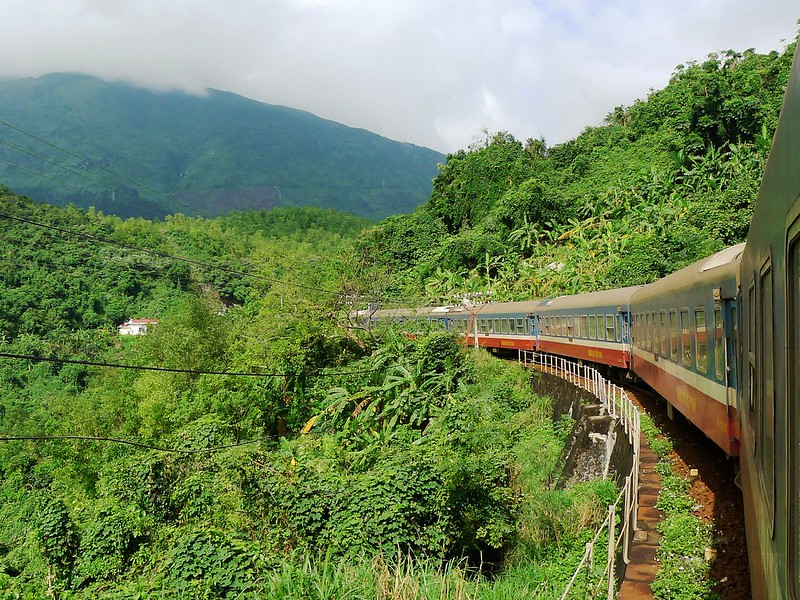Southern/Central Vietnam transportation guide
Get on board as we tell you about the exciting travel opportunities in southern and central Vietnam, from trains to buses to ferries.

Home to cities like Hue, Da Nang, Hoi An, Nha Trang and Ho Chi Minh City, among others, southern Vietnam is a unique place to explore, boasting a rich history and a fantastic landscape. Flanked by the South China Sea to the east, and the Mekong Delta in the south, and the Hai Van Pass all around, there’s no dearth of travel opportunities in southern Vietnam. Top that with an extensive transportation network, and you know this is where the Southeast Asian backpacking trip of your dreams is bound to come true!
With so many transportation options and routes available in southern/central Vietnam, it may be a tad bit overwhelming to plan your trip the first time. So grab a banh mi or a bowl of pho if you’d like, and read on to find out all you need to know about navigating through southern Vietnam and seamlessly planning a one of a kind journey.
How to travel across South Vietnam
By train
Vietnam Railways along with a couple of private operators runs a robust train network through the country, covering almost 12,000 Km from north to south. The central to southern stretch of this network extends from Hue all the way to Ho Chi Minh City, running along the South China Sea coast.

Connecting major towns like Da Nang, Nha Trang, Thap Cham and Bien Hoa, among others, traveling by train is one of the most enjoyable experiences in Vietnam. Depending on which train operator and route you choose, you’ll be able to opt for luxury, standard or tourist trains. As the name suggests, luxury trains typically offer more comfort and amenities like cold towels on board, in addition to better food, drinks and snacks.
If you’re fond of long, overnight train journeys, hop on a train from Hue to Ho Chi Minh City to travel the entire length of southern Vietnam in 20 hours, the longest train ride you can take in this part of the country. Priced at US $89 per person, the train journey is comfortable, with modern amenities like western toilets, Wi-fi and charging points. If the prospect of a dreamy train journey excites you, pack yourself some snacks and a good book, and snuggle up with the blanket provided on board, as the train takes you along Vietnam’s stunning coastline.
Alternatively, you could even explore some of these shorter train journeys within the region.
| Route | Frequency | Price |
| Hue to Da Nang | Up to 7 times daily | Starts from US $6 |
| Nha Trang to Ho Chi Minh City | Once a day | Starts from US $21 |
| Ho Chi Minh City to Da Nang | Twice a day | Starts from US $42 |
By bus/minivan
Vietnam’s extensive intercity bus network is one of the best things about traveling in the country, especially if you’re someone who loves taking the road. Buses and minivans are the most convenient modes of travel in the absence of rail connectivity, making it easier for travelers to head to smaller towns and offbeat destinations.

Having said that, do keep in mind that every bus operator would offer different amenities and types of buses at varying price points. For example, for the route between Nha Trang and Ho Chi Minh City, there are at least fourteen different buses available from ten different operators with prices ranging from US $10 to US $29.
The amenities on board also vary – while some buses offer food and others don’t, some also offer entertainment and Wi-fi access. Hence, when booking a bus ticket, keep an eye out for these little things so you can book a ride as per your requirement.
If you are new to the southern/central Vietnam region, here are a few bus/minivan route ideas to help you get started with travel planning.
| Route | Frequency | Price |
| Ho Chi Minh City to Can Tho | Up to 24 times daily | Starts at US $9 |
| Hoi An to Da Nang | U pto 19 times daily | Starts at US $6 |
| Da Lat to Nha Trang | Up to twice daily | Starts at US $7 |
By ferry
Southern Vietnam is home to dozens of rivers, including the mighty Mekong River, that double up as pathways to connect towns and cities that lie along their paths. The presence of this web of rivers across the region allows ferry services to run between these three primary points – Ho Chi Minh City, Can Gio and Vung Tau. The high speed ferries running between these ports are a popular and relatively economical mode of local transportation. Take a look at the ferry routes in this region here:
| Route | Frequency | Price |
| Ho Chi Minh City to Can Gio | Twice daily | Starts at US $12 |
| Can Gio to Vung Tau | Twice daily | Starts at US $6 |
| Vung Tau to Ho Chi Minh City | Twice daily | Starts at US $16 |
But it’s not just cities that are connected by ferries. If you’ve had enough of the city life and are looking to get away somewhere remote, Phu Quoc Island in the south of Vietnam is going to help beat those holiday blues. A fairly less-explored destination in the region, visit the island for views straight out of a glossy magazine!

An easy ferry ride away from the mainland, you can reach Phu Quoc Island from Ha Tien ferry terminal located close to the Vietnam-Cambodia border. But did you know, you could even cross that border on a ferry? Hop on a speedboat from Chau Doc in Vietnam and cross over to Cambodia to reach Phnom Penh directly via ferry. With ticket prices starting only at US $28, you cannot possibly find a cheaper way to cross an international border!
With such a well-connected transportation network in place, south Vietnam offers plenty of opportunities for keen travelers to explore the nook and crannies of the region at their own pace, in their own way. Make use of the trains, buses and ferries, and take on this exciting journey we know you’re going to remember for a long time to come!






